A Community of Cistercian Nuns Is Bringing Medieval Monastic Dynamism Back to France
The monastic grange project at the Abbaye Sainte-Marie of Boulaur has aroused a wave of enthusiasm in the country and is already inspiring other monasteries in Europe.

“A start-up of the 12th century in a 21st-century style.” It is with this catchphrase that the Cistercian nuns of the Abbaye of Boulaur (in Occitanie, southwestern France) describe the ambitious renovation project they have designed for their historic place of residence.
This simple phrase refers to a whole universe from the past, to a time when Christianity came to the peak of its glory in Europe — a begone era to which many think with nostalgia, as the Old Continent is sinking into an unprecedented crisis of vocations and a wave of monastery closures.
In this sensitive context for the Catholic Church, the recent announcement of a 4-million euro ($4.5 million) rebuilding plan for this ancient Fontevrist priory, located in a poor and small village of France, has sounded like a gift of Providence. The 12th-century monument, which has been housing a community of Cistercian nuns since 1949, was in very bad shape when its community of Cistercians decided to restore it.
Started right at the end of the coronavirus quarantine, the work will include the reconstruction of a large cowshed — that should be ready to welcome cattle for Christmas — and of the processing workshop where cheeses, jams, pâtés and flour are made.
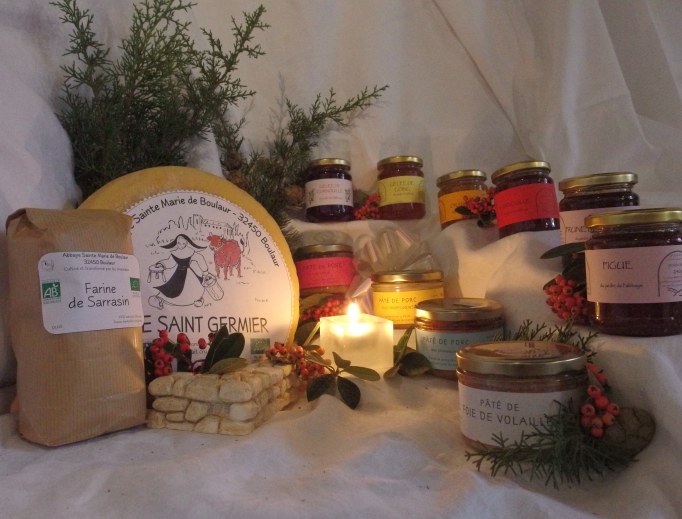
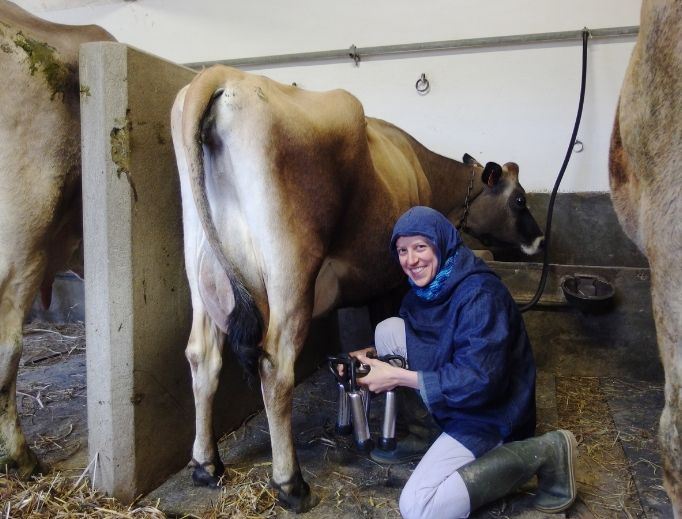
The goal is nothing less than the reproduction of an ancient monastic grange, which will enable the nuns to take care of their whole production chain, using the resources of their 112 acre-property: from fruit trees to cows and outdoor-reared pigs.
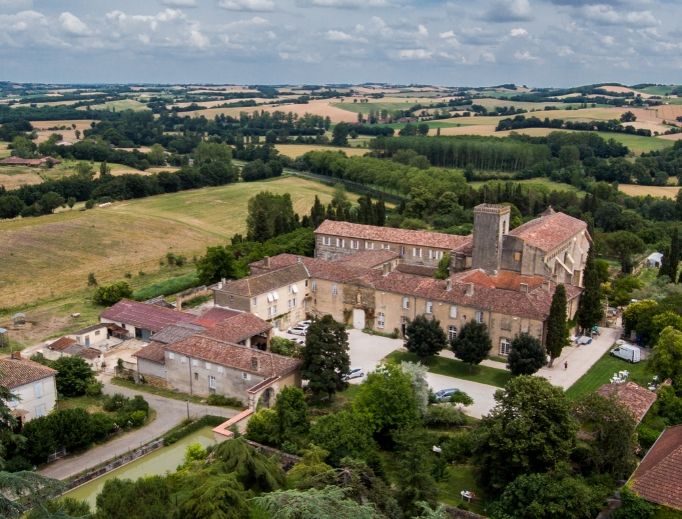

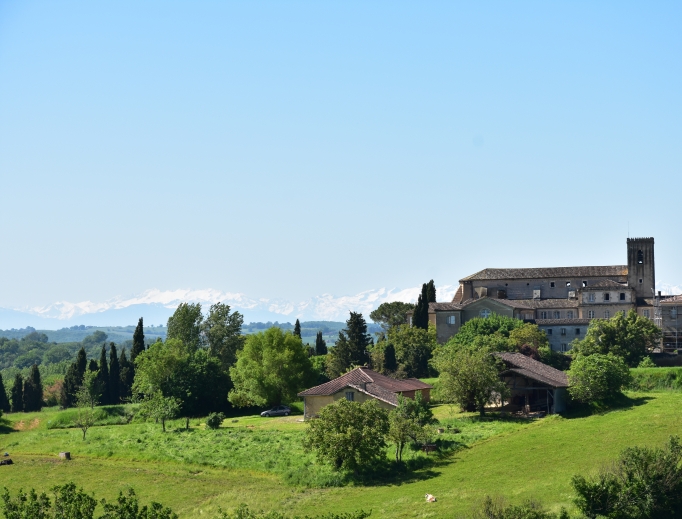
A Flourishing Community
The audacious project, called Grange 21, is at the height of the incredible dynamism of the community of Boulaur, which currently has 27 members (there will be 31 in September), with an average of five new postulants every year. The community’s average age is 45 years old.
“It is such a beautiful grace for us in a time where vocations lack everywhere, but it also supposes responsibility because we must take care of all these women, their primary needs, health care and retirement,” Sister Anne, who is overseeing the project, told the Register.
It’s been five years since the nuns, who follow the Rule of St. Benedict, started thinking about ways to maximize their production and earn a decent living for all of them, becoming at the same time a stable and attractive hub in a relatively poor and isolated region.
And this perspective has aroused a deep enthusiasm in the whole region and beyond. The 2019 presentation video has been very successful on social media and has also received wide coverage in traditional media.
Since then, funds have started to flood in through the Christian crowdfunding platform CredoFunding, but the nuns still need donations to make their project a reality.
Starting this summer, the community will welcome numerous volunteers willing to make their individual contributions in this construction.
“There will be participatory projects all this summer, during which the volunteers will help us make earth bricks to build the facades of the cowshed, using the soil of the abbey,” Sister Anne said, noting that there will also be several unbelievers among them who have been touched and edified by the dynamism of the community and, above all, by the boldness of this all-female entrepreneurship.
In this respect, the nuns have already been in touch with other abbeys as well as lay associations and businesses who are willing to follow their path, each in their own way.
At a time when the place of women within the Church is highly debated and subject to political instrumentalization, this project comes as a reminder of the fact that monastic tradition has always been a way for religious women to fully and freely express their potential.
The agricultural sector, which has become a predominantly man’s world, has been for centuries a way for female religious orders to guarantee their economic independence. “In our Cistercian Order, it was commonplace in the 12th century for abbesses to go horseback visit their lands and foundations,” Sister Anne said.
But while the nuns’ goal is to “promote feminine genius,” they insist that their approach is inclusive.
“We are always happy to collaborate with men and their specific genius, and at the same time we don’t accept to be restrained and be told that we are just little nuns incapable of developing large-scale projects on their own,” Sister Anne said. “We know we can do it, but we need to work hard for that, be united and know exactly where we’re going, with the Lord, always.”
What the Middle Ages Can Teach Us
Rooted in tradition, with a confident look to the future, the nuns are confidently going into their grange project, drawing inspiration from the Cistercian Golden Age of the 12th and 13th centuries.
This incredibly fruitful period for monasticism all around Europe, which saw the foundation of hundreds of monasteries in only a few decades, had a decisive impact on the whole of society at that time, enabling economy to develop through agriculture. These dynamics favored in turn the creation of roads, territorial networks and market hubs, around which cities were founded.
As Sister Anne recalled, the Cistercians used to work a lot with their hands and to exchange information, which made them able to write the very first treatises on agriculture and facilitate the emergence of an advanced agriculture in Europe.
“We want to stay faithful to this dynamic, which impacted the economy of the 12th century, with the means of the 21st century: We won’t have oxcarts like in ancient times, but our American friends will certainly be proud of our John Deere tractor,” she said with a laugh, adding that just like in the time of cathedral builders, their desire is to fuel the genius of the current culture through artistic and architectural contributions designed to preserve and enhance landscapes.
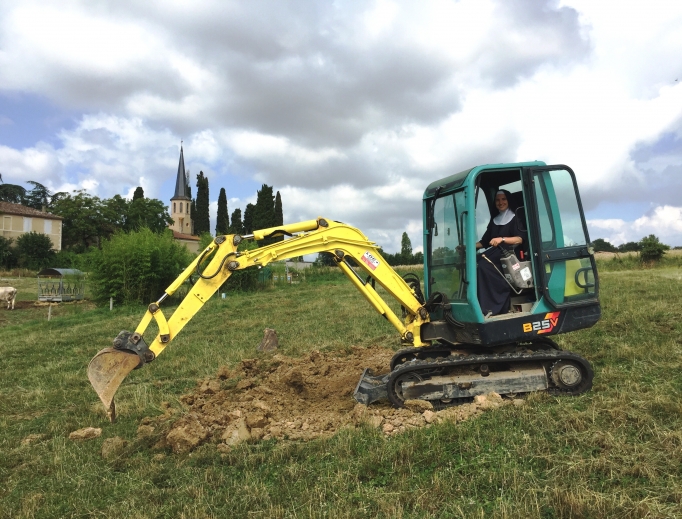
“Such an approach has a significant cost, but our goal is not just to earn a living for the coming 30 years. We want to build for eternity, to build a long-lasting historic site to be passed on to future generations — and the Middle Age is the perfect example of such a philosophy.”
It is with this in mind that the Grange 21 project will also include the construction of a large library to house the community’s most precious manuscripts, most of them dating back to the 13th and 14th centuries.
While recalling that the dynamism of medieval monasteries has enabled the Church to grow and sustainably shape the cultural landscape of the West, Sister Anne argued that the rooting of the Gospel in the European culture of today can only come through a monastic renewal capable of touching modern souls.
Supporting Local Inhabitants
Another core aspect of the project is the significant benefit that local inhabitants could derive from it in the coming years. Indeed, by making the abbey an attractive cultural, touristic and patrimonial hub, the nuns of the abbey of Boulaur hope they can offer support to local businesses and favor the creation of new jobs — in addition to providing a grocery store for those in the neighborhood who cannot easily go shopping in town. Such a benefit could then be extended to the whole region, which remains relatively poor overall.
“People in the region are very sensitive to what we are doing, even because we give a total priority to local businesses for the completion of work at the abbey, just like we favor short distribution channels, direct selling and quality products made onsite,” Sister Anne said.
“We are eager to create a brand-new adventure which will enable us to earn a living while supporting as many people as we can, taking into account the evolutions of our society.”
Solène Tadié is the Register’s Europe correspondent.
HOW YOU CAN HELP
Donations can be made from the U.S. through the Magnificat Foundation, selecting the “Boulaur Abbey’s Project.” The community’s latest updates can be followed on their Facebook page and on Instagram.

















